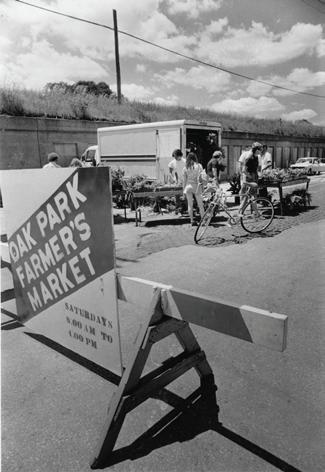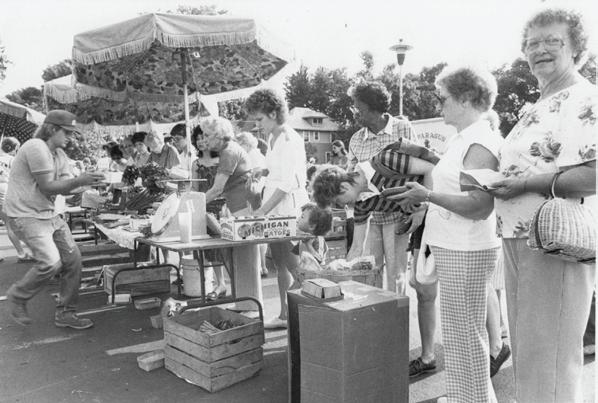Farmers’ Market







On its rst Saturday the market had one farmer
TMay 17, kicking of f a summer-long celebration of its 50th season. Throughout the summer, the market will feature special events to continue the celebration.
For many marketgoers, it’s hard to imagine the village without a far mers’ market. It is not just a place to buy flowers, fresh produce, cheeses and breads, but a place to meet up with neighbors and friends, buy freshly made donuts and coffee, and enjoy the far mers’ market bluegrass band.
“It’s a gathering spot that people look forward to. It makes Saturday morning special,”
Today, one can find far mers’ markets in Chicago and many suburbs. But back in 1975, far mers’ markets in urban areas were a new concept. At the time, villagers Marge Gockel and Carla Lind talked about bringing a market to Oak Park and drove to Ann Arbor, Michig an, to check out a market there. When they returned, they broached the idea to Sara Bode, then head of the village’s Mall Commission and later village president, who encouraged them to approach the village for permission.



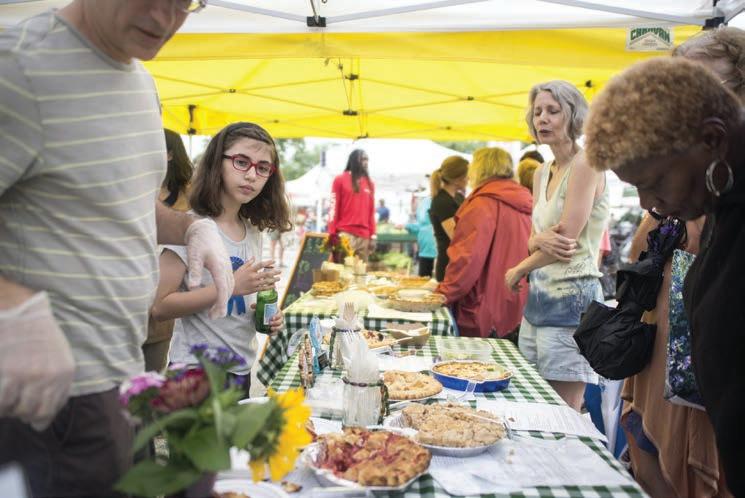
Watch for special events at this year’s Far mers’ Market to celebrate its 50th season. What would the Oak Park Far mers’ Market be without its lineup of fun activities such as a pie bakeof f, a corn roast, stone soup and other special events?
This year, look for some additional special events as well. And to g enerate more awareness, there will be 50th season banners lining the street near the market, as well as commemorative merchandise for sale, including tote bags, t-shirts, mugs and aprons
Here is a list of the events planned so far:
May 17 & May 23: Go Green Days
Kick off the market with a focus on sustainability and environmental stewardship.
May 31: Electri cation Expo
Learn about electrification and how it helps the environment, led by the village’s Office of Sustainability and Resilience.
August 9: Corn Roast
Taste the sweetest, freshest roasted corn right at the market. Bring cash to buy an ear or two!
September 6: Pie Bake- o
Create your best pie featuring market ing redients. Sign up to compete as a baker, apply to be a judge by sharing your passion and qualifications in two paragraphs or less at far mersmarket@oak-park.us, or just come to watch the judging!
Oc tober 25: Stone Soup
Warm up with free soup made from farmers’ donations and shop the final market of the season.
For the latest updates, visit the Far mers’ Market website.
TBy SUSAN MONTGOMERY Contributing Reporter
he Oak Park Far mers’ Market is unique among markets in that all the food must be grown or raised by the vendors. These vendors hail from Illinois, Wisconsin, Indiana and Michigan, so they don’t have to travel long distances to transport their produce.
“Our focus is fresh produce, but we still have plenty of vendors offering meat, eggs, fish, cheese, bread and honey,” said Jack Carmody, market manager. “Our pie vendor grows the fruits for their pies.”
Longtime vendors such as Geneva Lakes Produce Farm and Smits Far ms are focused on produce. Owned and operated by six generations of the Koster family, Geneva Lakes is based in Spring Prairie, Wisconsin, and focuses on sustainable farming and careful stewardship of the environment. Smits Farms, located in Chicago Heights, was established by Carl and Deb Smits 30 years ago and is Food Alliance Certified.
Meat vendors were not allowed in the market until 2005. Finn’s Ranch, a Michigan-based meat and egg vendor, has been coming to the Oak Park Far mers’ Market for nine years.
“We are a first-generation market and moved from Chicago in 2012,” said Alex Finn. “My husband’s job was transferred to South Bend, Indiana, and we ended up buying 14 acres in southwest Michigan that came with a house and 20 chickens. We had young kids. My sister-in-law suggested we buy some cows.”
One thing led to another. As their little farm grew, Sean Finn quit his day job and Alex quit her day job a few years later to focus solely on farming. First, they began selling to people they knew while they expanded their knowledge about far mers’ markets. Today, they have about 80 cattle, mostly black angus. Said Alex Finn: “Our beef is 100 percent grassfed. We do not give them vaccines or hormones. T he cattle are not confined to a small area. T hey are on the grass throughout the year. In winter we feed them hay and keep them in a pasture by our house.”
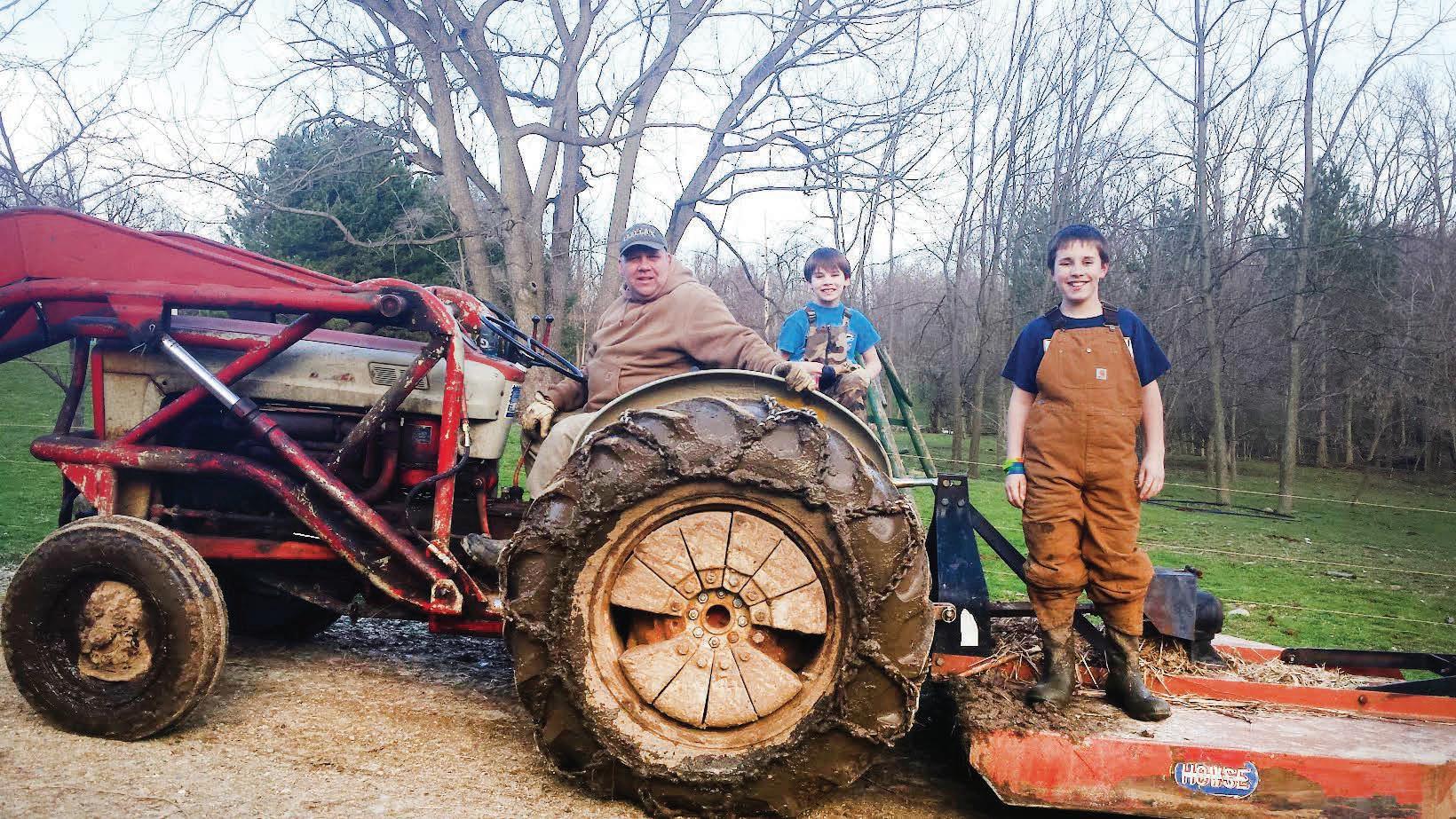


By SUSAN MONTGOMERY Contributing Reporter
It starts with selecting seasonal produce to put on your table. The fruits and ve getables that you buy at the far mers’ market have been harvested a few days before they go to market and the storage and transport time is far shorter than the produce that is delivered to the local grocery store. Hence, they are fresher and full of vitamins and minerals.
Eating produce that is seasonably available also reduces the need for produce to be shipped from faraway climates
“The more we can depend on locally grown food, the smaller our carbon footprint is,” said Carla Lind, who co-founded the market in 1975 with Oak Park resident Marge Gockel. “The quality of freshly grown fruits and ve getables that have not been stored for months is far better for all of us.”
Far mers’ markets also provide shoppers a chance to chat with the vendors, many of
whom live only a few hours away. You can lear n about their farming practices.
“My farm model is based on sustainability. It is all organic,” said Holden Wilson, owner of Old Gaffer’s Garden based in Berwyn. Wilson grows his produce in plots in Berwyn, Riverside and parts of Oak Park “I think knowing where our food comes from is important. I do think everyone should not only cook for themselves, but grow something in a ga rden, if possible, to appreciate the process of growing food.”
Old Gaffer’s Farm is “no till, no dig.” Wilson explained that traditionally a far mer will re-plow the soil which, over time, is not good for the soil. “I try to disturb the soil as little as possible so that all of the good micronutrients that are in the soil are not disturbed. I add compost and mulch on top of the soil.”
Unlike far mers’ markets in other communities, Oak Park’s Far mers’ Market is run through the village government. Many others are nonprofit organizations, said Jack Carmody, village far mers’ market coordinator.
The village is committed to promoting sustainability and has recently hired a new director of sustainability. This offers the far mers’ market an opportunity to partner
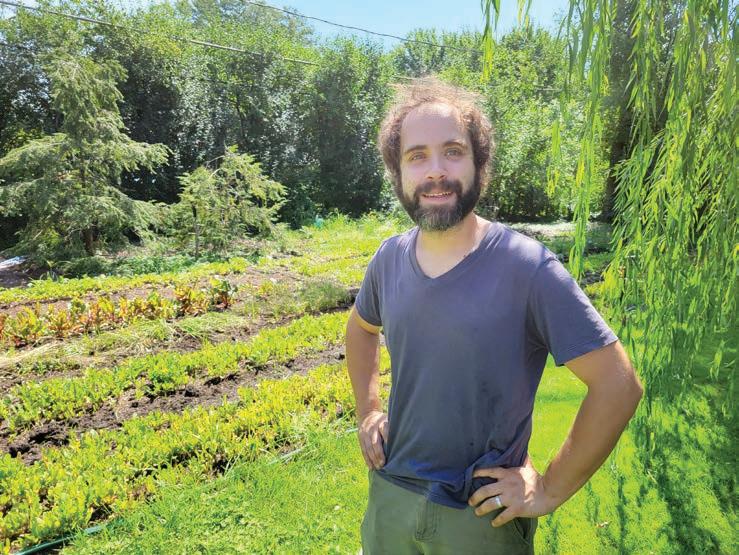
Holden Wilson walks his garden housed on a Riverside property — it is one of four that make up Old Ga er’s Garden.
with the village sustainability department to offer education sessions at the market.
In late May or early June, the village’s Sustainability Department will offer an educational program at the market. Check the Far mers’ Market website for event details. Another less visible factor re garding sustainability is that the food comes from far ms in Wisconsin, Michigan, Illinois and Indiana. This close proximity reduces driving time to transport produce, thus reducing overall emissions. Transportation is a
major factor in increasing temperatures that are affecting climate change.
Secondly, markets are often walkable for many residents. That too cuts down on the need to drive.
By supporting a far mers’ market, you are supporting local ag riculture. The pandemic reinforced the need for strong community food resources. It also benefits your health and fosters a sense of community. Take the kids and let them share in the decision-making process.
By SUSAN MONTGOMERY Contributing Reporter
One goal of the Oak Park Far mers’ Market is to make healthy re gionally produced foods accessible to lower-income residents.
One way it achieves this is by encouraging eligible farmers’ market vendors to accept SNAP and LINK cards. SNAP (Supplemental Nutrition Assistance Program) was for merly known as Food Stamps. The program, which in Illinois is known
as LINK, provides financial assistance for food purchases. LINK is a credit card that can be used at eligible vendors, including at grocery stores
Individuals can apply for these benefits through the Application for Benefits Eligibility (ABE) on the Illinois.gov website or by submitting a paper application. Eligibility is based on household size and income
“The Oak Park Far mers’ Market really serves a broad area that includes Berwyn, Austin, and Forest Park,” said Jack Carmody, market manager. “Some of these areas have lower-income residents who may have a harder time trying to access fresh produce in their own neighborhoods. We are trying to
serve a large group of people by making sure we have a diverse selection at our market.”
Back in 2010, then Illinois Gov. Pat Quinn, an Oak Park native, came to the Oak Park Far mers’ Market to sign a bill that would make it easier for farmers’ markets to accept LINK cards. The following year, the Oak Park Far mers’ Market began accepting LINK cards.
“Any of the produce can be purchased using the LINK card,” Carmody said. “All of our vendors who have eligible produce acce pt LINK. Now, we partner with an experimental station that partners with the LINK Match Station where, if you spend $25 at the market, you g et additional cou-
pons to spend.”
Carmody began his job as farmers’ market coordinator in 2023. A native of the Philadelphia area, he volunteered at farmers’ markets across Philadelphia while growing up, and he went on to earn a Bachelor of Science de gree in dietetics and nutrition. Working to enhance food access to residents in underserved communities was always important to him.
When the opportunity arose to accept a job working with far mers’ markets, he saw the opportunity to work toward expanding access to fresh produce for lowincome residents so that they could have healthy food as well.
Likewise, their hens are free range and only go into their coup at night. Finn said the flavor of the eggs, which are collected by hand, is noticeable.
“We go through our production of eggs on a weekly basis,” she explained. “They are not sitting in a freezer or warehouse for a week before being transported to market. The term ‘cage-free’ is misleading. That means chickens are confined and don’t see the light of day. That is not the case with our chickens; they are not raised in confinement or in factory conditions. Our work is more labor intensive.”
Finn emphasized that when shoppers buy from a local farmer, they are not only supporting their local economy but are supporting farmers who focus on sustainable environmental practices. Finn’s Ranch participates in about 13 farmers’ markets a week, including Green City Market in Lincoln Park and another in Chicago’s West Loop.
“It is a busy season, but it is a relatively short season of 20 weeks,” Alex Finn explained. “We encourage people to remember the farmers when the market is closed. You can always go to the farmers’ online stores and place an order throughout the winter.”
She added that the Oak Park community has been “phenomenal” in that they support her f amily farm throughout the entire year.
“We have gotten to know the customers who have been with us since day one. It becomes a relationship,” she said. Additionally, Sheila Essig and Matt Callone, who staf f their booth at the Oak Park market, are both local residents.
Holden Wilson, who started his urban farm, Old Gaffer’s Garden, five years ago, is a relative newcomer to the Oak Park Far mers’ Market. Based in Berwyn, he far ms small plots of land in Berwyn, Riverside and Oak Park.
“My mom was a gardener,” he said. “I was a chef and that led me into gardening for myself. I wanted to grow my own food. That is how I got into it. I call my garden a salad farm as it includes greens, salad mixes of lettuce, radishes and I am trying to grow carrots for the first time.”

What does he love about the Oak Park Far mers’ Market?
“When I pitch it to people, I say you can get anything there. Oak Park has
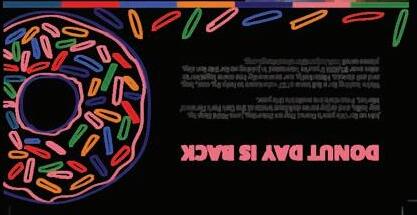





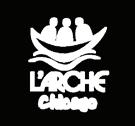

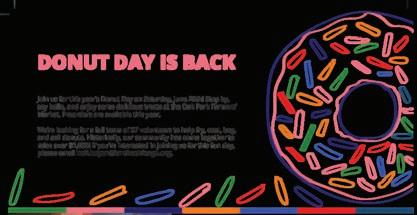

50 seasons
from page B1
After receiving approval from the village, the two women worked to establish a Farmers’ Market Commission the following year and then looked for a suitable location. That tur ned out to be North Boulevard.
“We put to gether a committee that included John and Carol Walton, Sue Sandvoss and others,” recalls Lind. “We decided from the beginning that for the farmers’ market to be official and to have longevity, it had to be under the auspices of the village gover nment. That is why we drafted an ordinance for the village to establish the market.”
At that time, with no other far mers’ markets in the re gion, the biggest challenge was getting the growers. Lind and Gockel wrote to the Farm Bureau and all sorts of growers’ organizations to recruit far mers. When the market opened that year, it had one far mer.
“He had a really good selection of produce,” recalls Lind. “That first day, the market was not well attended. Then the more people began hearing about it, the more customers we got and the more vendors began to participate. As the season went on, more produce became available to sell.”
But by the end of that first summer, the market had 19 far mers, who sold everything from asparagus and flowers to tomatoes, blueberries, raspberries, strawberries, sweet corn and apples.
Steve Owens, a far mer who was interviewed in a village documentary on YouTube, said he did not make much money selling produce in the early years of the Oak Park Far mers’ Market. But over time,

he gained a foothold and repeat customers who saw the value in knowing where their food was grown.
The Far mers’ Market Commission worked to promote the market in Oak Park and River Forest, through ads in local papers, holding trivia contests, selling t-shirts, and designing shopping bags with the market’s logo on them.
Before long, the market outg rew its original location on North Boulevard and found a new, larger location at its current site, the Pilgrim Cong re gational Church parking lot at the northwest corner of Lake Street and Elmwood Avenue.
It did not take long for the market to become a cherished community tradition. “From the consumer side, nothing beats getting fresh produce,” Gockel said in the YouTube video. “At the same time, shoppers are supporting small far mers, most of them from family-owned farms.”
To ensure quality produce was being sold, the Far mers’ Market Commission worked to make sure that all far mers were selling produce grown on their own farms. But then came the Great Cauliflower Caper, which made the Chicago news one summer. It happened early in the season, when a far mer brought a cauliflower that was so big that market staf f thought it surely was not grown by the seller himself. Market staf f drove to the far mer’s property to see if the cauliflower had actually come from the far mer’s garden. But they found no evidence of cauliflower even grown on the property. The case went to court and after several hours of trial, it was settled out of cour t.
The incident underscored the importance of providing customers with truly fresh, home-grown produce. The opportunity to buy fresh produce from far mers within driving distance of Oak Park is the essence of the far mers’ market. Yet there

is something intangible that the market offers: community.
During the 1970s, village leaders were concerned about maintaining Oak Park as a viable and strong community that was a good place to live This occurred just as the village was working to promote the positive aspects of the community, such as its historic architecture and the Frank Lloyd Wright Home and Studio as a tourist destination.
“The market added to the feeling of community of Oak Park and to a sense of belonging,” Lind recalls. “When I returned to live in Oak Park after 25 years away, I never imagined the far mers’ market would be

as large and vibrant as it has become. It is wonderful to see how it has flourished. It is a gathering place.”
Indeed, community is at the heart of the far mers’ market, concurs Frank Lipo, executive director of the Oak Park and River Forest History Museum.
“The Oak Park Far mers’ Market brings people together from all parts of our lives in an outdoor setting,” he says. “You see people passing out political materials or promoting the latest cause at tables on the outskirts of the market. There is a band playing. You can buy donuts and a cup of coffee and listen to the bluegrass band. It’s a slice of Americana.”
By JILL O’MAHONY STEWART Contributing Reporter
After 26 years, the Oak Park Farmers’ Market has a new logo. The logo, from Oak Park-born designer Judith Mayer, was selected by the Far mers’ Market Commission and features a farm scene inspired by the Frank Lloyd Wright design aesthetic.
According to the artist, “I created a logo that puts a stylish twist on the Prairie style, emphasizing artisanship and simplicity like a Frank Lloyd Wright design, while still feeling contemporary.
“It employs diagonals for energy, a monoline for sleekness, rounded ends for a touch of softness and hand-drawn lettering to fit the words perfectly in a rectangular block. The logomark and the logotype components can be used in many different configurations for flexibility.”
The new logo will debut on T-shirts, tote bags, and stickers available for sale at the market starting June 25.
The old Oak Park Farmers’ Market logo
For 26 years, the market used the same logo. It was designed by Charlotte Lyons, a textile artist and teacher who now lives in Vermont. She lived in Oak Park from 1983 to 1997 with her daughters Erin, Maggie and Mo.
She now lives in a country village in southern Vermont. “I design playful embroidery panels for stitchers and teach textile arts through in-person and online


e current logo for Oak Park Farmers’ Market
workshops,” she said. “My newest design is called ‘Oak Park’ featuring yet another pink house, a recur ring nod to our beloved pink Victorian on South Taylor.”
When asked what inspired her to create the familiar market design, she said, “We loved the Far mers’ Market! Donuts, music, friends, food! All the visual imagery!
“The [old now retiring logo] is actually the second one I designed for the market. The first was in 1994 – a colorful paper cutting of ve getables, flowers and fruit. At the time I was designing and printing shirts for schools as fundraisers, beginning with my ‘Beye School, So Cool’ shirt that I created when my children went there. I still remember that first Far mers’ Market pitch to the committee at Village Hall and how nervous I was. The second and current design was also a paper cutting I did in my home studio. It was and still is such a favorite for me.”
In addition to the Far mers’ Market and Beye School designs, Lyons also screenprinted shirts for Hatch, Holmes, Mann, Longfellow, CAST productions, Orchesis, Day in Our Village and small businesses.
Reflecting on her time in Oak Park, Lyons said, “We are so grateful for our time in Oak Park. Absolutely cherished as the magic years in our family story! … [I’m] excited to see the new design and to visit the village ag ain sometime.”
Reach Charlotte Lyons through her website, Instagram and Etsy sites. Her website includes her newsletter.
https://housewrenstudio.com instagram.com/housewrenstudio etsy.com/shop/charlottelyons

The Oak Park Farmers’ Market is celebrating its 50th season in 2025!
Congratulations to everyone who’s made the Market a community favorite — vendors, volunteers, musicians, and of course our loyal shoppers. Here’s to five decades of farm-fresh goodness and local pride!
And a special thanks to our founders Marge Gockel and Carla Lund and all the loyal and dedicated commissioners who preceded us.
Oak Park Farmers’ Market Commission:
Jessica Green, Chair
Kelsey Di Pirro
Marcia Diverde
Summer Fields-Hayda
Charlotte Lacey
Woody Meachum
Britta Monson
Macaire Ament O’Connell
Jill Stewart
Oak Park Farmers’ Market Village Sta :
Jack Carmody, Farmers’ Market Manager
Sara Semelka, Health Education Manager










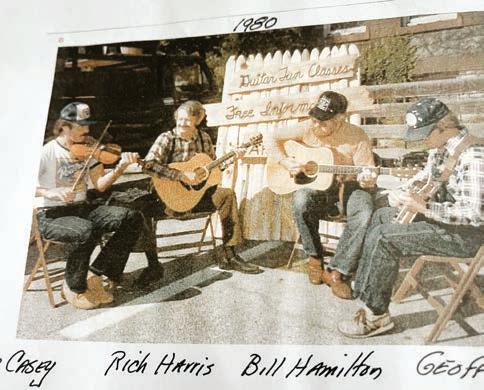
EARLY DAYS: A snapshot from the market in 1980’s.
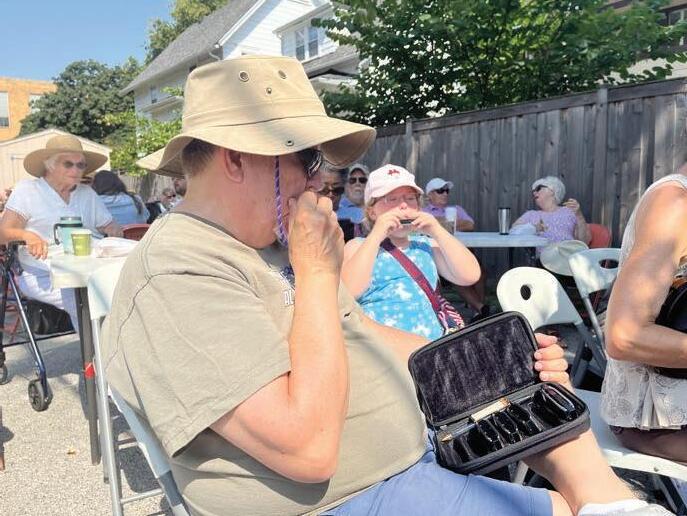
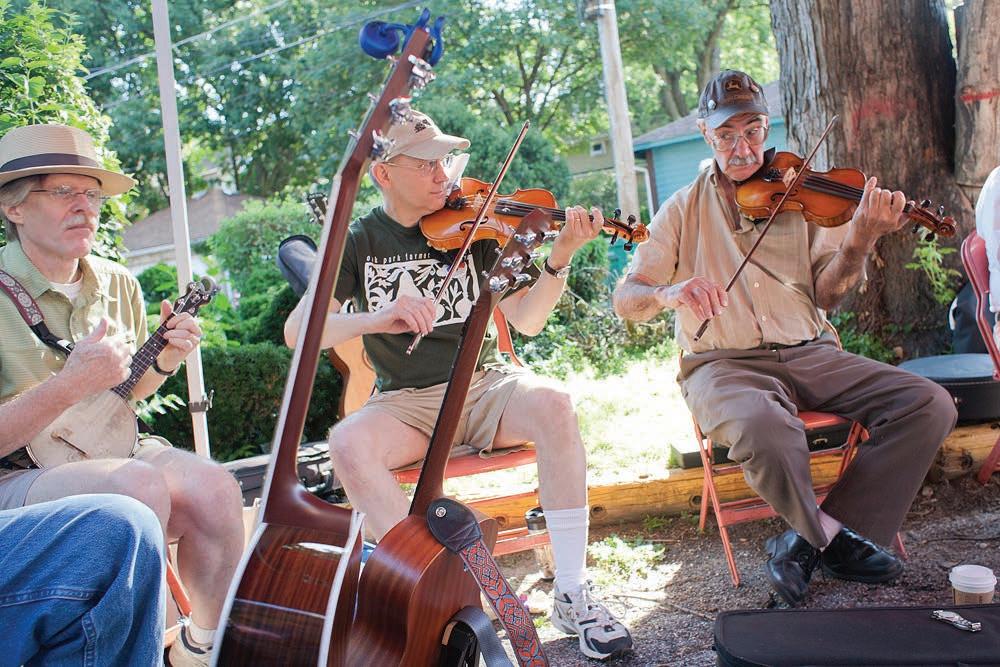
he music has always focused on traditional American ich might include bluegrass or country tunes. It asual, down-home atmosphere to the market. On en Saturday, you’ll find the musicians gathered end of an alley just north of the church, under a shade tree ve as early as 7 a.m., to greet the earliest shoppers ho amble down the alley to buy a freshly made donut and ee at the church. The church puts out tables and market goers to sip their coffee, eat their and enjoy the music.
here are always parents with strollers and toddlers in ho stop for a moment to listen to the music. The little ones are especially captivated and often sway back and to the music.
Tillotson has been performing at the market ever since. The band has grown in size, often with up to 30 musicians at a time, seated near the area where Pilgrim Church sells donuts and coffee on market day. The band’s participants have included a coal miner, physicians, lawyers, professors, journalists and a host of other professionals. Everyone is welcome, regardless of experience.
“Rich Har ris and Mike Casey felt it was important to welcome people into the band,” says Tillotson. “So if someone wanted to play, they were welcome to sit in with us.”
“On a beautiful fall day last October, a gentleman came up to me and said he had been listening to our playing throughout his years of growing up in Oak Park. He said, ‘I want to thank you for continuing this tradition.’ I thanked him, but emphasized it really was the effort of all of keep the band going. We have talented musicians and we have something unique that is going on.”

Tillotson proudly remembers welcoming into the band some young people who were budding musicians and have now gone on to professional careers.
For Tillotson, as well as many musicians who have other day jobs, performing in the bluegrass band satisfies their hunger to perform with a group of individuals who like to make music.
“Performing in the band is a highlight of my week,” Tillotson says. “No matter how exhausting my week might be, performing at the farmers’ market will always make it better. The market and the band help lift everyone’s spirits. Sharing that with others has been a real joy.”
6,000 donuts each Saturday come out of Pilgrim’s kitchen
By SUSAN MONTGOMERY Contributing Reporter
Waiting in line to buy freshly made donuts and a cup of coffee at the Oak Park Far mers’ Market is a time-honored tradition.
Few of us think about the 40 or so volunteers who get up before the crack of dawn to make the batter, fry the donuts, dip them in cinnamon or powdered sugar, and pack them in boxes to be sold that morning.
It takes a small ar my to run this impressive operation that makes and sells 6,000
The credit goes to three guys who belonged to Pilgrim Cong re gational Church back in the early 1980s. They came up with the idea as a way to help boost the church. The church had leased its expansive parking lot to the village as the site for the Oak Park Far mers’ Market just a few years prior. The partnership worked well for both the village and the church.
The church’s membership had dwindled to a few dozen families by the early 1980s. One Saturday morning, three entrepreneurial-minded members of the cong re gation brought a couple of Fry-Daddies and some boxes of Bisquick to make donuts to sell at the market. They sold about $30 worth of donuts that day.
Eventually, word got out and the idea of getting a donut and a cup of coffee at the et took of f, according to Andy Houha, member and leader in the donut-


Carlie Beach moves a rack of donuts fresh out of the fryer down in the basement at Pilgrim Cong regational Church in Oak Park.
“The cong re gation realized this could become a serious revenue stream and looked into how professional bakeries made their donuts,” he says. “They bought a kettle fryer, this 35 by 36 size frying tub, and settled on a supplier to buy a commercial donut mix and all the sugars and frying oils. Using the new machinery, we started making a lot of donuts!”
The enterprise grew exponentially. The cong re gation had a large corps of its own members who began work in the wee hours of the morning, mixing the batter, revving up the machinery, making donuts, and adding the cinnamon and po Eventually, the

the donut-making operation with its own corps of volunteers and share in the profits. The idea took of f.
“Three out of four Saturdays nonprofit groups provide the labor and produce the donuts and coffee,” says Houha, who is one of a dozen church volunteers who oversee operations when local nonprofits are on duty. “We share with our partners one third of the revenue. We get inquiries all the time from local groups that are interested in taking a shift to make donuts.”
While the donut-making production is a



